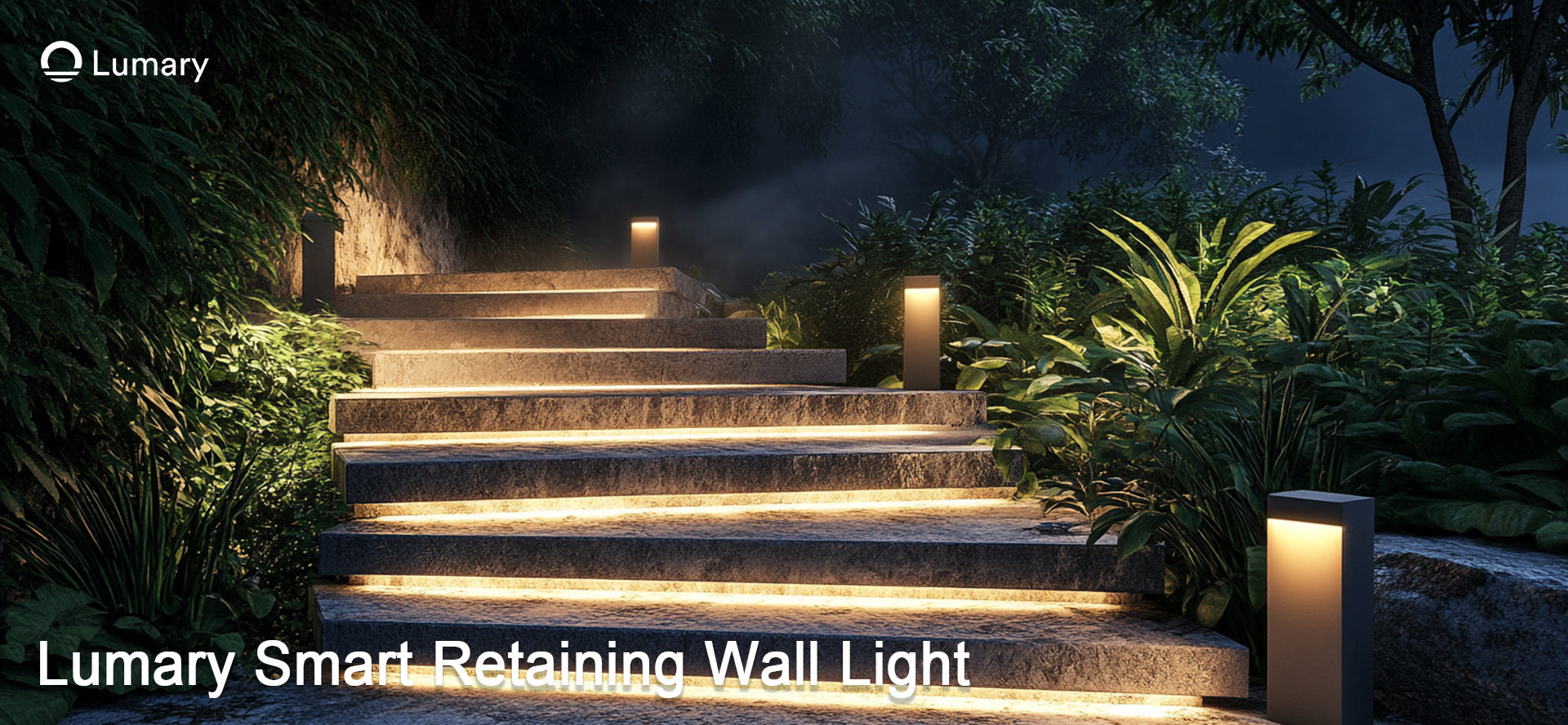Installing LED pot lights at home is not hard. With some planning and simple electrical skills, you can do it yourself. LED lights are great for modern homes. They save energy, look stylish, and give a neat, simple design. Whether you want to improve your living room or make your bedroom cozier, this guide will help you step by step.

Key Takeaways
-
Get tools like a drill, screwdriver, and voltage tester first. This helps you work faster and stay safe.
-
Decide where to put the lights carefully. Place them 4 to 6 feet apart for even brightness. Think about the room's use to set the right mood.
-
Stay safe by turning off the power and using a voltage tester. Wear gloves that protect you when working with wires.
-
Test the lights after you're done to make sure they work. Look for flickering or uneven brightness and fix any problems.
-
Check local electrical rules to make sure you're following them. If you're unsure, ask a professional to check your work.
Tools and Materials for Installing LED Pot Lights
Before starting your LED pot light project, gather all your tools and materials. Having everything ready will save time and make the job easier. Let’s split them into must-haves and extras.
Essential Tools for Installation
You’ll need some basic tools to begin. Here’s what you’ll need:
-
Drill and drill bits: To make holes and secure parts.
-
Drywall saw or hole saw: For cutting neat holes in the ceiling.
-
Screwdriver: Use a Phillips or flathead to tighten screws.
-
Wire stripper: To remove the coating from electrical wires safely.
-
Measuring tape: Helps you place lights in the right spots.
-
Voltage tester: Ensures the power is off before touching wires.
These tools are essential for a safe and smooth installation.
Required Materials for Recessed Lighting
Now, let’s look at the materials you’ll need for the job:
-
LED pot lights: Pick good-quality ones like Lumary Smart RGB Gimbal Light Ultra 4 Inch for stylish lighting.
-
Electrical wires: Make sure they match your home’s wiring system.
-
Junction boxes: These keep wires connected and protected.
-
Wire connectors: Securely join electrical wires together.
-
Ceiling template: Many LED lights include a guide for cutting the right hole size.
These materials will help you complete the installation properly.
Optional Tools for Easier Installation
These tools aren’t required but can make the job simpler:
-
Stud finder: Avoids cutting into beams or other obstacles.
-
Headlamp or work light: Brightens your workspace in darker areas.
-
Fish tape: Helps pull wires through walls or ceilings.
-
Ladder: A sturdy ladder is helpful for high ceilings.
These extras can save time and effort, especially for beginners.
Pro Tip: Check your tools and materials before starting. It’s better to have everything ready than to stop halfway to find something missing.
Planning and Preparation for Recessed Lighting
Before you start cutting holes in your ceiling, it’s important to plan and prepare. A little time spent upfront can save you from headaches later. Let’s go over the key steps to get ready for your recessed lighting project.
Safety Precautions Before You Install
Safety should always come first when working with electricity. Start by turning off the power to the area where you’ll be installing the lights. Use a voltage tester to double-check that no electricity is flowing through the wires. Wear insulated gloves if you’re handling electrical components. If you’re unsure about anything, don’t hesitate to consult a professional. It’s better to be safe than sorry.
Pro Tip: Keep a fire extinguisher nearby, just in case. It’s a small step that can make a big difference.
Choosing the Right Placement for LED Pot Lights
The placement of your lights can make or break the look of your room. Think about the purpose of the space. Are you lighting up a workspace, like a kitchen, or creating a cozy vibe in a living room? Avoid placing lights too close to walls, as this can create harsh shadows. For even lighting, space the lights about 4 to 6 feet apart. If you’re using adjustable lights like the Lumary Smart RGB Gimbal Light Ultra 4 Inch, you’ll have more flexibility to direct the light where you need it.
Creating a Layout Plan for Recessed Lighting
A layout plan helps you visualize where each light will go. Use a measuring tape to mark the spots on your ceiling. Make sure the lights are evenly spaced and avoid placing them near ceiling joists or other obstacles. You can use a stud finder to locate these. Many LED pot lights come with a ceiling template, which makes marking the holes much easier. Take your time with this step—it’s worth getting it right.
Note: Test your layout by temporarily placing the lights on the ceiling before cutting any holes. This way, you can make adjustments if needed.
Step-by-Step Process to Install Recessed Lighting

Cutting Holes in the Ceiling
To start, you’ll need to cut holes for recessed lighting in your ceiling. Begin by marking the spots where you want the lights. Use the layout plan you created earlier as a guide. Most LED lights, like the Lumary Smart RGB Gimbal Light Ultra 4 Inch, come with a ceiling template. Place the template on the ceiling and trace around it with a pencil.
Once you’ve marked the spots, it’s time to cut. Use a drywall saw or hole saw to cut a hole in the ceiling. Be careful to avoid cutting into joists or wires. A stud finder can help you locate obstacles before you start. After cutting, check that the light fixture fits snugly into the hole.
Tip: Always turn off power before cutting into the ceiling to avoid accidents.
Running and Testing Electrical Wires
Now it’s time to run the wires. First, turn off power to the area where you’re working. Use a voltage tester to confirm there’s no electricity flowing. Then, run the electrical wires from the power source to the holes you’ve cut. If you’re installing multiple lights, connect the wires in a series.
Fish tape can make this step easier by helping you pull wires through the ceiling. Once the wires are in place, test them with a voltage tester to ensure they’re working correctly. This step is crucial to avoid issues later in the installation process.
Wiring the Lights and Junction Boxes
Next, you’ll wire the light fixture and connect it to the junction box. Start by stripping the ends of the wires using a wire stripper. Match the wires by color—black to black, white to white, and green or bare for the ground wire. Use wire connectors to secure the connections.
Once the wires are connected, tuck them neatly into the junction box. Attach the box to the ceiling, ensuring it’s secure. Finally, connect the light fixture to the wires and test it to make sure it works. If everything looks good, you’re ready to move on to mounting the lights.
Pro Tip: Double-check all connections to ensure they’re tight and secure. Loose wiring can cause flickering or other issues.
Mounting the LED Pot Lights
Now comes the exciting part—putting the lights in place! After wiring everything, it’s time to mount the light into the ceiling. Start by carefully inserting the LED light fixture into the hole you cut earlier. Most recessed lights, like the Lumary Smart RGB Gimbal Light Ultra 4 Inch, come with spring clips or tabs that hold them securely in place. Push the clips upward as you slide the fixture into the ceiling. Once the clips snap back, they’ll lock the light in position.
Make sure the light sits flush with the ceiling for a clean, professional look. If it doesn’t fit snugly, double-check the hole size or adjust the clips. Don’t force the fixture, as this could damage it or the ceiling.
Pro Tip: Before you mount the light, test it one last time to ensure it works. It’s easier to fix wiring issues now than after installation.
If you’re installing adjustable downlights like the Lumary Smart RGB Gimbal Light, take a moment to rotate or tilt the light to your desired angle. This flexibility allows you to direct the light exactly where you need it, whether it’s highlighting artwork or brightening a workspace.
Adding Trim and Final Touches
The final step in your install recessed lighting project is adding the trim. The trim not only enhances the appearance of your recessed lights but also hides any gaps around the edges. Most LED recessed lighting kits include trim pieces that snap or twist into place. Align the trim with the fixture and gently press it until it clicks.
Once the trim is secure, step back and admire your work. Check that all the lights are evenly aligned and flush with the ceiling. If you notice any unevenness, adjust the trim or fixture as needed.
Note: If your lights use replaceable bulbs, now’s a good time to insert them. Make sure they’re compatible with your fixture to avoid issues.
Finally, clean up your workspace. Remove any dust or debris from the installation process. Turn the power back on and test all the lights. You’ll love how the new recessed lighting transforms your space, adding both style and functionality.
Safety and Final Checks for Recessed Lighting
Testing the Installed Lights
After mounting your recessed lights, test them to ensure they work. Turn the power back on and flip the switch. If the lights don’t turn on, check the wiring again. Loose or incorrect connections can cause problems.
For adjustable LED lights like the Lumary Smart RGB Gimbal Light Ultra 4 Inch, try the tilt and rotation features. Adjust the light to cover the area you want. If the lights flicker, it could mean a wiring or power issue.
Tip: Test each light one at a time. This makes it easier to find and fix any problems.
Ensuring Compliance with Electrical Codes
Following electrical codes is important for safety and avoiding issues later. Make sure all wires are secure and covered properly. Junction boxes should be closed tightly with no wires sticking out. If you’re unsure about the rules, ask your local building authority or hire an electrician to check your work.
Using high-quality lights like the Lumary Smart RGB Gimbal Light helps meet modern safety standards. These lights are built for efficiency and reliability, making them a great choice for your ceiling.
Note: Electrical codes can differ by location. Always check the rules in your area.
Troubleshooting Common Installation Issues
If something isn’t working, don’t worry. Here are some common problems and solutions:
-
Light won’t turn on: Make sure the wiring is correct and power is on.
-
Flickering lights: Tighten loose wires or replace damaged ones.
-
Uneven lighting: Adjust the angle or position of the lights.
For smart recessed lights like the Lumary Smart RGB Gimbal Light, check the Wi-Fi or Bluetooth setup. If needed, reset the light and reconnect it using the app.
Pro Tip: Keep a list of troubleshooting steps nearby. It will save time and help you fix problems faster.
Congratulations! You’ve just learned how to install LED recessed lighting step by step. From gathering tools to mounting the lights and adding the final touches, you’ve got everything you need to transform your space.
Now it’s time to enjoy your new lighting setup. Whether you’re hosting a party or relaxing with a book, the Lumary Smart RGB Gimbal Light Ultra 4 Inch will create the perfect ambiance.
Remember: Always prioritize safety. If you’re unsure about any step, don’t hesitate to call a professional. It’s better to be safe than sorry!
So, go ahead and light up your home with confidence. You’ve got this! 😊
FAQ
What are recessed lights, and why do people like them?
Recessed lights are built into the ceiling. They look neat and modern. These lights save space and brighten rooms evenly. Many people choose them because they work well in any room.
How many lights should I use for my room?
Measure your room to decide how many lights you need. A good rule is to keep lights 4 to 6 feet apart. Adjustable LED wafer lights let you change the lighting to fit your space.
Can LED wafer lights go in all types of ceilings?
Yes, LED wafer lights work with most ceilings, like drywall or drop ceilings. Their thin shape fits tight spaces easily. Always check your ceiling’s structure before starting the project.
Are recessed lights good for saving energy?
Yes, especially LED wafer lights. They use less power than regular bulbs and last longer. This makes them a smart and eco-friendly choice for your home.
How are LED wafer lights different from regular recessed lights?
LED wafer lights are very thin and don’t need a big can to hold them. Regular recessed lights need more space and a can for setup. Wafer lights are great for simple, modern designs.

















